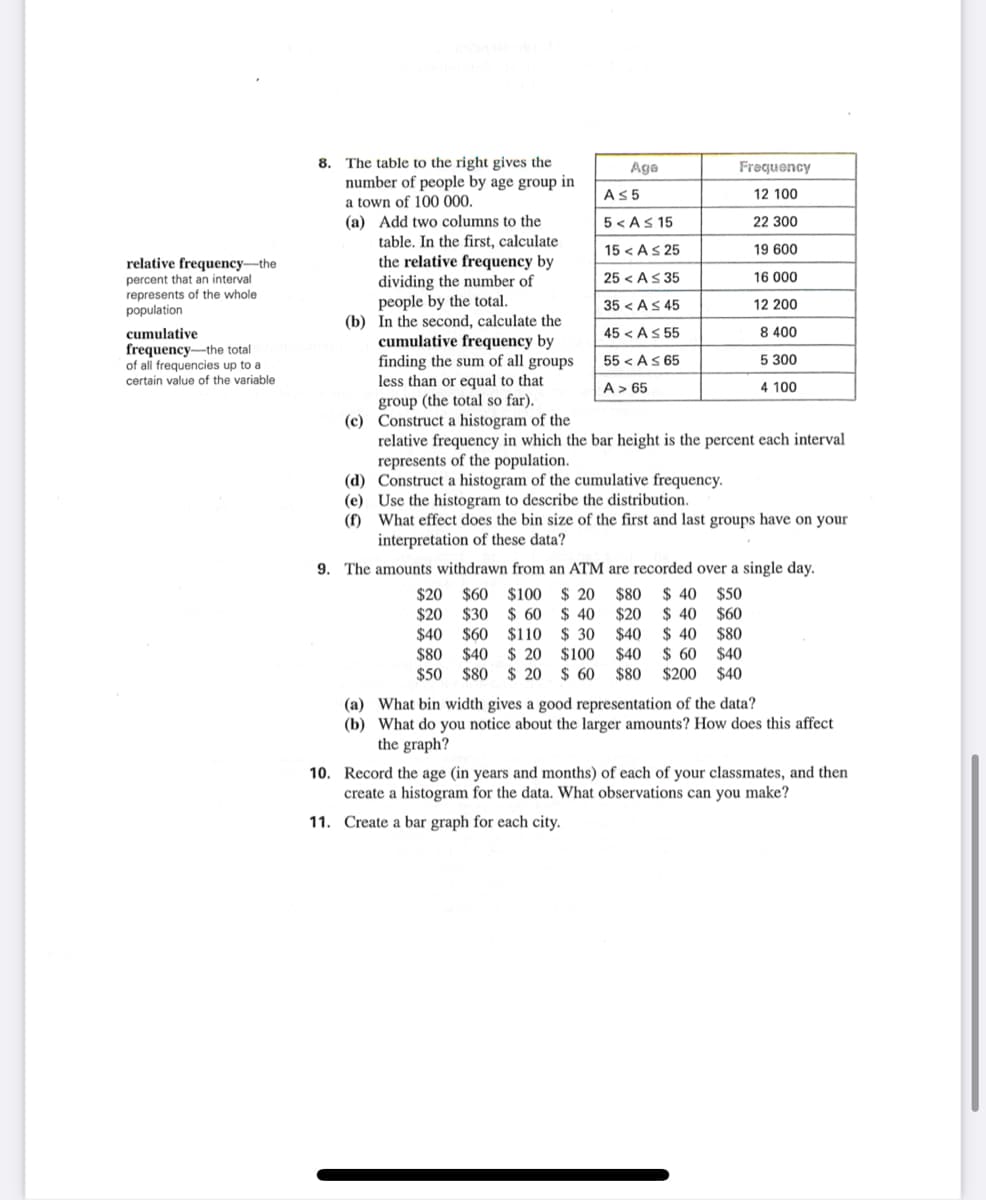The table to the right gives the number of people by age group in a town of 100 000. (a) Add two columns to the table. In the first, calculate the relative frequency by dividing the number of
The table to the right gives the number of people by age group in a town of 100 000. (a) Add two columns to the table. In the first, calculate the relative frequency by dividing the number of
Algebra & Trigonometry with Analytic Geometry
13th Edition
ISBN:9781133382119
Author:Swokowski
Publisher:Swokowski
Chapter10: Sequences, Series, And Probability
Section10.8: Probability
Problem 32E
Related questions
Question
Please answer Question 8.

Transcribed Image Text:8. The table to the right gives the
Age
Frequency
number of people by age group in
a town of 100 000.
(a) Add two columns to the
table. In the first, calculate
the relative frequency by
dividing the number of
people by the total.
(b) In the second, calculate the
cumulative frequency by
finding the sum of all groups
less than or equal to that
group (the total so far).
(c) Construct a histogram of the
relative frequency in which the bar height is the percent each interval
represents of the population.
(d) Construct a histogram of the cumulative frequency.
(e) Use the histogram to describe the distribution.
(f) What effect does the bin size of the first and last groups have on your
interpretation of these data?
AS5
12 100
5 < AS 15
22 300
15 < As 25
19 600
relative frequency-the
percent that an interval
represents of the whole
population
25 < As 35
16 000
35 < AS 45
12 200
cumulative
45 < AS 55
8 400
frequency-the total
of all frequencies up to a
55 < AS 65
5 300
certain value of the variable
A > 65
4 100
9. The amounts withdrawn from an ATM are recorded over a single day.
$20 $60 $100
$ 20
$80
$ 40 $50
$ 60
$110
$ 40
$ 40
$20 $30
$40 $60
$80 $40
$50
$20
$60
$ 30
$40
$ 40
$80
$ 20 $100
$ 20 $ 60
$40
$ 60
$40
$80
$80
$200
$40
(a) What bin width gives a good representation of the data?
(b) What do you notice about the larger amounts? How does this affect
the graph?
10. Record the age (in years and months) of each of your classmates, and then
create a histogram for the data. What observations can you make?
11. Create a bar graph for each city.
Expert Solution
This question has been solved!
Explore an expertly crafted, step-by-step solution for a thorough understanding of key concepts.
Step by step
Solved in 5 steps with 1 images

Recommended textbooks for you

Algebra & Trigonometry with Analytic Geometry
Algebra
ISBN:
9781133382119
Author:
Swokowski
Publisher:
Cengage

Glencoe Algebra 1, Student Edition, 9780079039897…
Algebra
ISBN:
9780079039897
Author:
Carter
Publisher:
McGraw Hill


Algebra & Trigonometry with Analytic Geometry
Algebra
ISBN:
9781133382119
Author:
Swokowski
Publisher:
Cengage

Glencoe Algebra 1, Student Edition, 9780079039897…
Algebra
ISBN:
9780079039897
Author:
Carter
Publisher:
McGraw Hill
